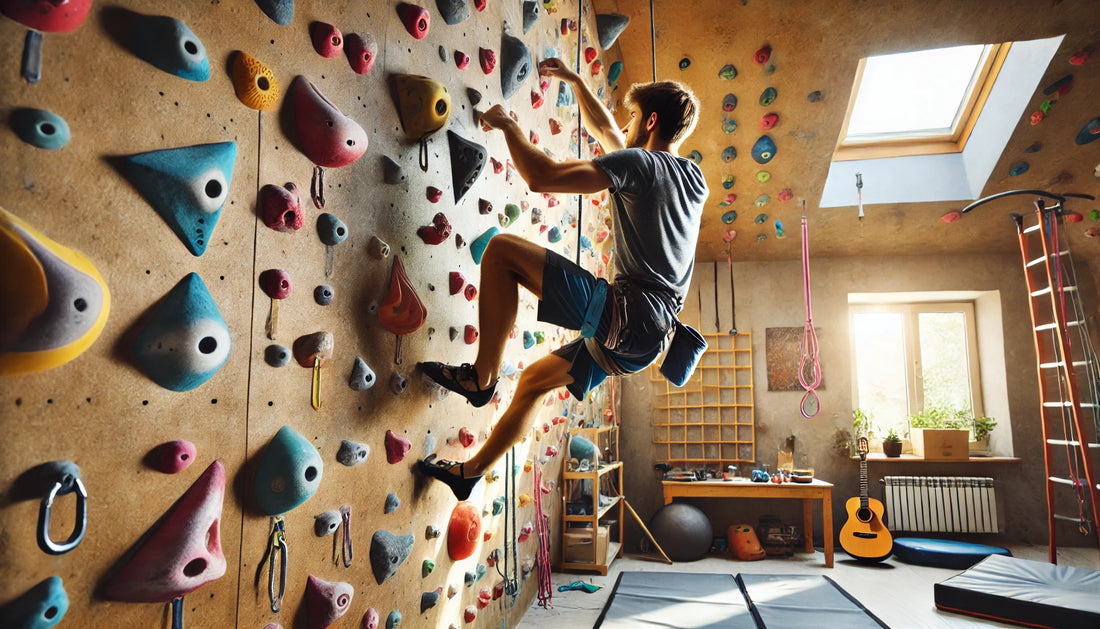Training for outdoor climbing requires a mix of strength, technique, and endurance. Whether you're gearing up for long multi-pitch routes, bouldering problems, or challenging sport climbs, you’ll need a well-rounded training regimen. Here’s how to prepare your body and skills for the demands of outdoor climbing.
1. Build Full-Body Strength
Climbing isn’t just about finger strength—your whole body plays a role. Incorporate these exercises into your routine to develop strength:
- Pull-ups: Great for building upper body strength, pull-ups are essential for strong arms, shoulders, and back.
- Core workouts: Your core helps you stay stable on the wall. Exercises like planks, leg raises, and Russian twists target your abs and obliques.
- Leg strength: Don’t forget your legs! Squats, lunges, and step-ups will improve your footwork and balance on steep routes.
A home climbing wall can also boost your strength-training efforts. Check out our climbing hold collections and wall design instructions to create the ultimate training wall for full-body workouts.
2. Focus on Technique
Mastering climbing technique is just as important as building strength. Practice the following skills regularly:
- Footwork: Good footwork can save energy and make climbs feel easier. Practice precise foot placements and shifting weight from foot to foot.
- Body positioning: Climbing efficiently means positioning your body properly. Focus on keeping your hips close to the wall and using your legs to push upward.
- Grip variation: Train your grip by practicing different types of holds, like crimps, slopers, and pinches. This will prepare you for various rock types outdoors.
Having a home wall setup with a variety of holds helps you perfect these skills. Browse our climbing holds to start setting routes that enhance your technique.
3. Endurance Training
Outdoor climbing often requires sustained effort, especially on longer routes. Improve your endurance with these tips:
- Long climbing sessions: Spend time on your home wall doing extended, lower-intensity climbs. Focus on climbing continuously for 15-30 minutes to build endurance.
- Interval training: Alternate between high-intensity climbing and resting periods. This helps develop the stamina to recover quickly between tough moves.
- Aerobic exercise: Running, cycling, or swimming will boost your cardio endurance, making long days on the crag easier.
If you're building a home climbing wall, be sure to incorporate routes that challenge your endurance. Our wall design instructions can guide you in creating varied routes to target different aspects of your training.
4. Mental Preparation
Outdoor climbing can be mentally challenging, especially on exposed or multi-pitch routes. Prepare your mind by practicing:
- Route reading: Before climbing, visualize the moves and anticipate challenges. This helps build confidence and mental focus.
- Breathing techniques: Controlled breathing helps keep anxiety at bay and maintains energy during long climbs. Practice deep, steady breaths while on the wall.
- Problem-solving: Outdoor routes may require creativity. Train your problem-solving skills by setting challenging boulder problems or practicing unfamiliar moves on your wall.
5. Rest and Recovery
Rest days are crucial for building strength and avoiding injury. Make sure you include these recovery practices in your routine:
- Active recovery: Light activities like walking or stretching on rest days can aid muscle recovery without overworking your body.
- Hydration and nutrition: Staying hydrated and eating balanced meals rich in protein and carbs will help fuel your muscles for the next climb.
With the right combination of strength, technique, and endurance training, you’ll be ready to tackle outdoor routes confidently. Start your journey to becoming a stronger climber by exploring our climbing hold collections and wall design instructions to build a training space that supports your goals.

